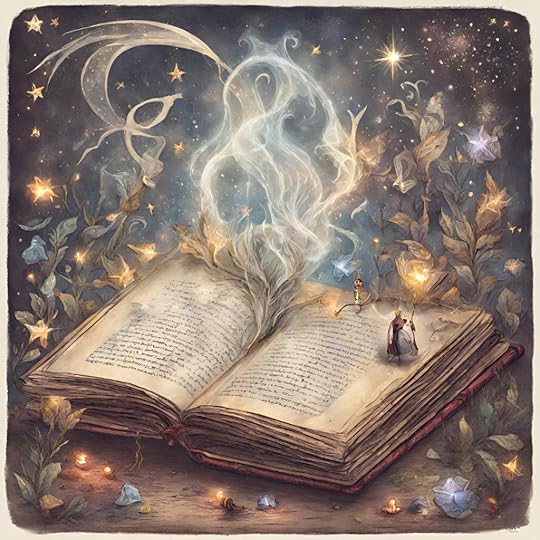Unleashing the Power of a Prologue
Ever pondered over the first few pages of a novel and wondered, “What magic lies here?” That, my friends, is the allure of a prologue – a narrative’s secret sauce. Think of it as the appetizer before a grand feast, setting the stage and whetting the appetite for the story ahead. Whether you’re a newbie weaving your first tale or a seasoned author, mastering the art of the prologue can transform your storytelling. So, grab your quills (or laptops), and let’s dive into the do’s and don’ts of crafting a prologue that captivates from the get-go!
Understanding ProloguesA prologue, in the realm of storytelling, is like a gateway into the world you’ve created. It’s not just any opening chapter; it’s a standalone section that precedes the main story. Its purpose? To provide a snapshot that sets the tone, context, or background necessary for the narrative that follows.

Now, don’t confuse a prologue with a foreword. A foreword is an introduction, usually not written by the author, that discusses the significance of the book, often from an outside perspective. A prologue, on the other hand, is an integral part of your story, penned by you, the author, to draw readers into the fictional universe you’ve crafted.
Understanding this distinction is crucial. The prologue is your chance to make a first impression, to lay down the breadcrumbs that lead readers deeper into the heart of your tale.
The Do’s of Writing a Prologue1. Set the Tone of Your Story: Your prologue is the first taste readers get of your writing style and the world you’ve created. Use it to establish the mood. Is your story a heart-pounding thriller, a deep historical narrative, or a whimsical fantasy? Let the prologue be the lens through which readers view the rest of your story.
2. Create Intrigue or Suspense: A compelling prologue hooks the reader. It raises questions that beg answers, encouraging readers to turn the page. Think of it as laying down a trail of narrative breadcrumbs. Just a hint of mystery or a dash of danger can go a long way in gripping your audience.
3. Provide Important Background Information: Sometimes, your story needs a setup that the main plot can’t accommodate. The prologue is perfect for this. It can give a glimpse of historical context, a past incident, or a character’s backstory that is pivotal to understanding the upcoming narrative.
4. Introduce Key Themes or Motifs: Prologues can be a beautiful way to introduce recurring themes or symbols that will echo throughout your book. This subtle art of foreshadowing can enrich the reader’s experience, making the unfolding of the plot more meaningful.

Good Prologue Example: Imagine a prologue that opens in the midst of a mysterious ritual in an ancient world, hinting at a powerful artifact’s existence. It’s succinct, sets a foreboding tone, and leaves readers with questions about the artifact’s relevance. This prologue succeeds because it intrigues without overwhelming, offering just enough to lure readers into the story.
This prologue aims to set a mystical and suspenseful tone, introducing key elements like the ancient city, the mysterious amulet, and a sense of impending change.
Under the starlit sky of the ancient city of Eridu, a shadow moved stealthily across the ziggurat’s stone tiers. The air was thick with the scent of myrrh, and distant chants of priests resonated through the night. At the summit, beneath the gaze of the crescent moon, stood the high priestess, her eyes closed in deep communion.
In her hands, she cradled a relic, old as time itself – a small, unassuming amulet, yet pulsating with an energy unseen. Legends spoke of its power, capable of bending the will of gods, yet lost to the sands of time until this fateful night.
Below, the city slept, unaware of the ritual that would decide its fate. For in the heart of Eridu lay secrets, buried deep beneath the earth – secrets that could awaken a forgotten magic or unleash an age-old curse.
As the priestess whispered ancient incantations, the amulet glowed, its light a beacon in the darkness. This night would be remembered in the annals of Eridu, a night when the veil between worlds thinned, and the course of history teetered on the edge of a blade.
In the streets below, a lone figure watched, the fate of Eridu unknowingly resting in their hands.
Remember, a prologue should be like a key to a secret door, unlocking something unique and essential for the journey ahead. It’s not just about starting your story; it’s about starting it with purpose.
The Don’ts of Writing a Prologue1. Don’t Overload with Irrelevant Details: While setting the stage is crucial, a prologue overloaded with unnecessary details can deter readers. Keep it concise and ensure that every element contributes to the story or the atmosphere you’re trying to create.
2. Don’t Spoil the Main Plot: The art of a prologue lies in piquing interest, not in revealing key plot points. Avoid giving away too much, too soon. The goal is to intrigue your readers, not to satisfy their curiosity right off the bat.

3. Don’t Make it Too Long or Too Short: Length matters in a prologue. Too long, and you risk losing the reader’s interest; too short, and it might fail to establish the necessary context or mood. Aim for a sweet spot where it’s just long enough to serve its purpose.
4. Don’t Use It as an Info Dump: It’s tempting to use the prologue as a dumping ground for all the background information you feel the reader should know. Resist this urge. Exposition is best when woven seamlessly into the narrative, not lumped at the beginning.
Bad Prologue Example: Conversely, a prologue that spends several pages detailing the intricate political history of a fantasy world, filled with names and dates, can be overwhelming. It risks losing the reader’s interest before the actual story begins, functioning more as a textbook than a narrative hook.
This prologue demonstrates common mistakes like info-dumping, excessive exposition, and a lack of narrative hook or character focus.
In the vast expanse of the universe, on the small planet of Zorlon, there existed a complex political system involving five distinct factions: the Zephyrians, known for their advanced technology; the Aquarians, masters of the seas; the Terrans, guardians of the land; the Pyrans, who harnessed the power of fire; and the Ethereans, mysterious manipulators of air.
The history of Zorlon was marked by a series of unending conflicts among these factions. The first major conflict, known as the Battle of Silent Skies, took place in the year 3056 of the Zorlonian calendar. It was initiated by the Zephyrians in response to a territorial dispute over the mineral-rich lands of the Terrans. This battle led to the 50-year War of Elements, which saw alliances form and break.
The intricate political landscape of Zorlon was further complicated by the emergence of a prophecy in the year 3100, foretelling the rise of a chosen one who would bring balance. This prophecy was discovered by the high priest of the Ethereans, in the ancient text ‘Chronicles of the Elemental Age,’ written by the revered sage Alaric.
As the five factions continued their power struggles, the common citizens of Zorlon yearned for peace and harmony.

Remember, the prologue is an integral part of your book, not an afterthought. It should enhance, not hinder, the reader’s journey into your story. A well-crafted prologue can be a powerful tool in your storytelling arsenal, but misused, it can be a stumbling block.
Crafting the perfect prologue is a bit like being a magician – you want to captivate your audience with a hint of the wonder that’s to come, without revealing all your tricks. Remember, a prologue is your opening act, an invitation into the world you’ve so meticulously created. Use it wisely to set the tone, create intrigue, and hint at the themes that will dance through your narrative. Whether you’re a first-time writer or a seasoned storyteller, every book is an opportunity to enchant readers anew. So go ahead, play around with your prologue, and see the magic unfold in your story!



